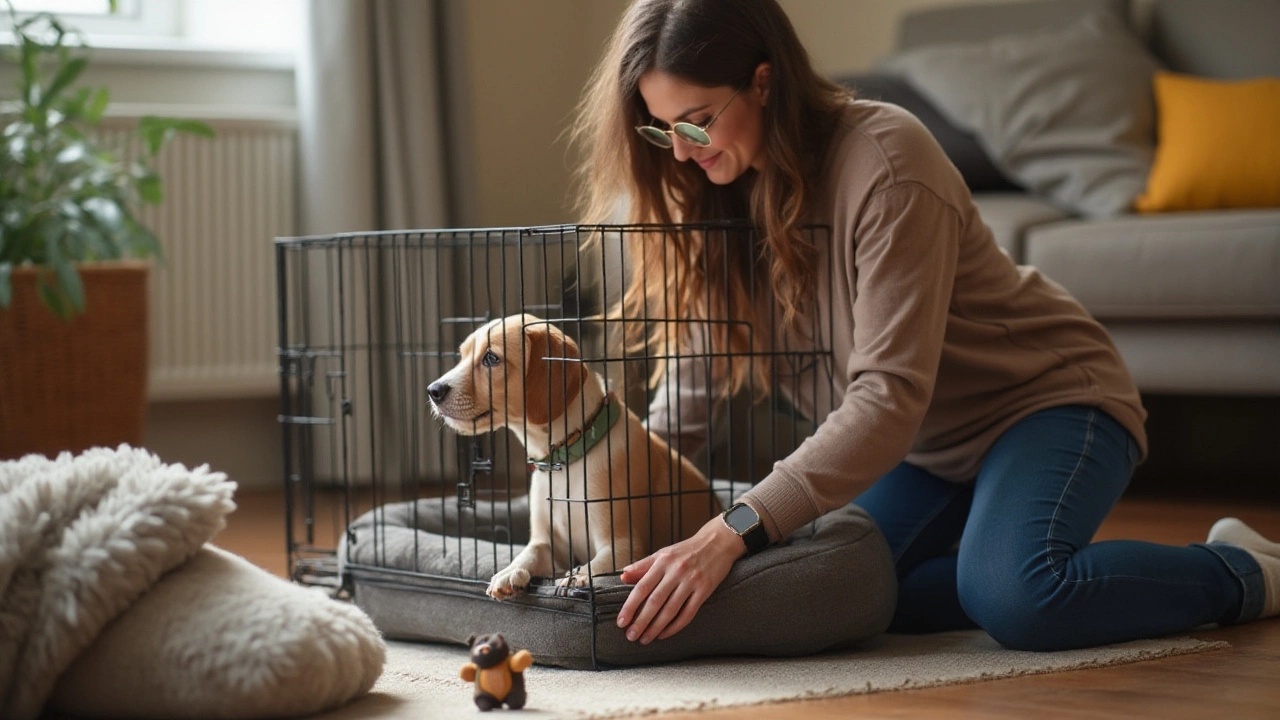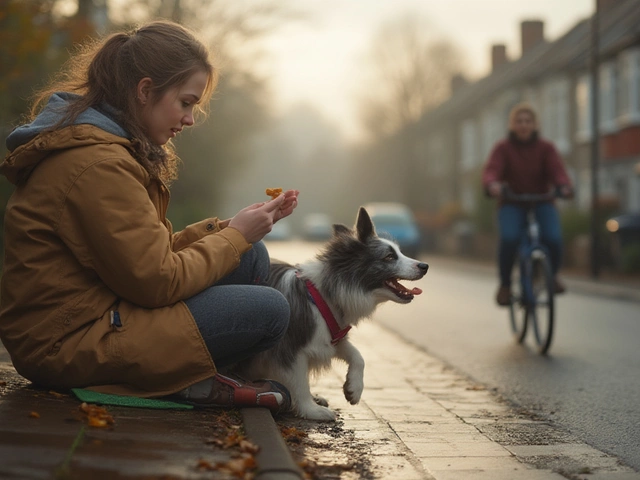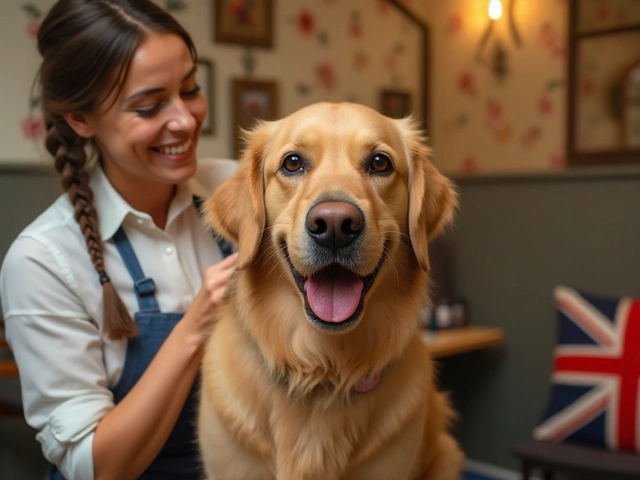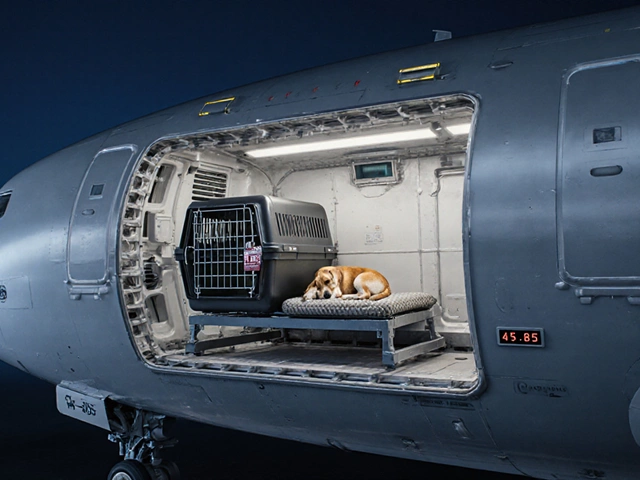Traveling with your furry friend can be a heartwarming adventure, but when it comes to flying, the skies may harbor some concerns. For many dog owners, the idea of their beloved pet nestled somewhere beneath their seat in cargo can induce a wave of apprehension. It's essential to delve into this experience from the canine perspective, to better prepare and ensure a smoother journey.
While airlines take specific measures to transport animals safely, the cargo hold can be an unfamiliar and unsettling place for dogs. Factors such as temperature fluctuations, noise, and handling all play a role in how a pet might perceive this journey. Through understanding and preparation, the skies can become a friendlier place for our four-legged companions.
- Understanding the Cargo Experience
- Factors Influencing Stress Levels
- Tips for a Safe Journey
- Airline Protocols for Pet Safety
Understanding the Cargo Experience
When flying with pets, especially our beloved dogs, the cargo hold can seem like an ominous enigma. Whereas the cabin may provide a cocoon of protection and familiarity, the cargo area is less seen, often filled with strange sounds and shifts in environment. This understanding becomes crucial for those considering flying their dogs in cargo. First, it is essential to note that the cargo hold is generally pressurized and temperature-controlled, but not to the same extent as the passenger cabin. This distinction ensures pets have a stable environment, albeit with certain fluctuations.
Contrary to some misconceptions, airlines are committed to making the cargo hold safe for transporting animals. There are regulations and ordinances in place, overseen by aviation and animal welfare authorities, to ensure dogs are transported in an environment as secure as possible. According to the International Air Transport Association, carriers must provide proper ventilation and lighting throughout the flight.
The American Veterinary Medical Association notes, "While it's important to acknowledge the concern associated with flying a pet in cargo, understanding the preparation and safety protocols can alleviate many fears."It's vital for pet owners to communicate with their chosen airline to fully comprehend these specifications, as they might vary slightly between different carriers.
When we dig deeper into the logistics, the term "live animal" is commonly used in airline regulations, and this reflects the level of care expected. Dogs must be housed in approved crates that meet international standards, providing them enough room to stand, sit, and lie naturally. The crate's construction and comfort can play a substantial role in mitigating trauma. Inside, you might include familiar items like a cozy blanket or an unwashed t-shirt bearing the owner’s scent. These items are often encouraged to reduce stress levels in dogs, by providing a familiar aroma amidst a sea of unfamiliarity.
Another factor influencing the cargo experience is the airline's loading and unloading process. Dogs are usually the last to be loaded and the first to be unloaded. This measure helps minimize their time on the tarmac, reducing exposure to adverse weather conditions. It's common practice for animals to be boarded only after they have been properly scanned and recorded, ensuring an added layer of vigilance. Yet, the sight of their owners at the receiving end can dissolve hours of anxiety in seconds, which underscores the human element in this logistical puzzle.
For those flying regularly, it's wise to cultivate a relationship with specific personnel within the airline’s live animal logistics team. Familiar voices in times of uncertainty might just add a layer of reassurance. An awareness of protocols, combined with personal interactions, could vastly enhance the travel experience for both dogs and their human companions. Ultimately, knowing how the cargo experience unfolds reveals a world where empathy, regulations, and practical considerations converge to shape a voyage that respects the precious bond between pets and their owners.
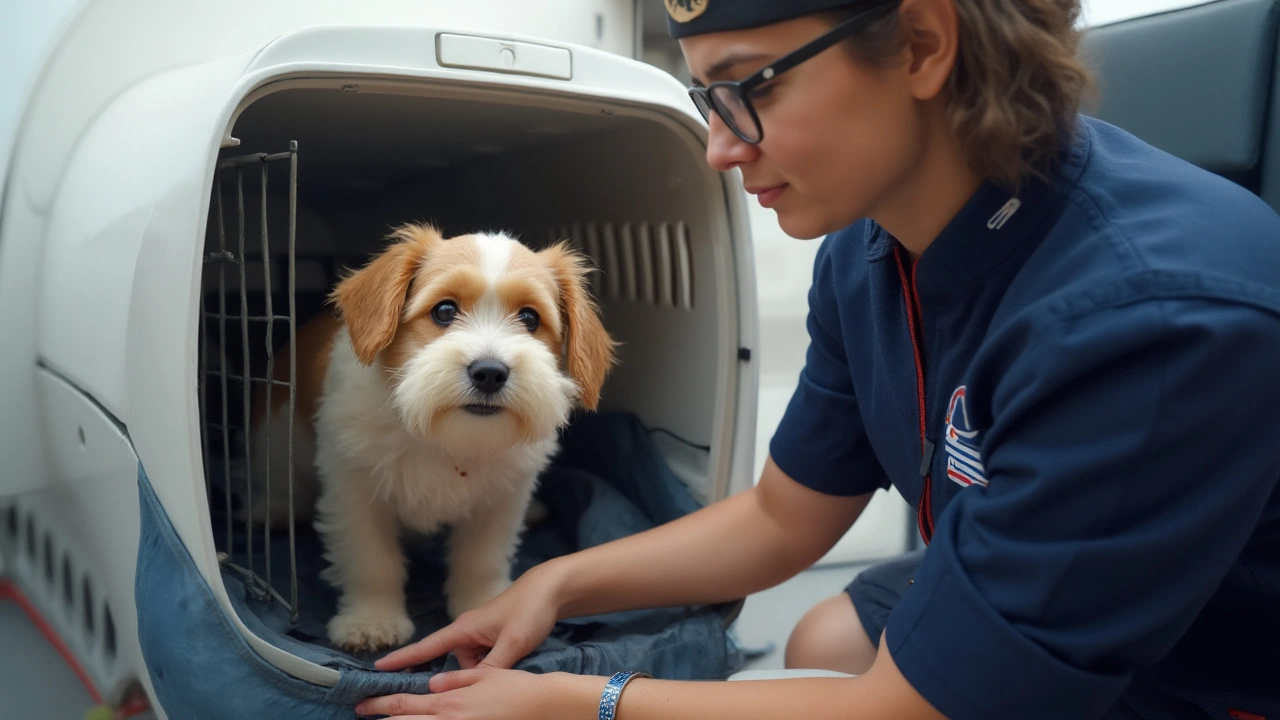
Factors Influencing Stress Levels
Flying can be an overwhelming experience for dogs, especially when relegated to the cargo hold. Several factors contribute to the stress levels in our canine companions during air travel. To begin with, the unfamiliar environment of the cargo hold itself poses a challenge. Imagine being placed in a metal tube with noises you've never heard before, temperatures that fluctuate unpredictably, and the constant vibration of engines – sounds pretty daunting, right? This scenario is where many dogs find themselves during a flight. For a creature with heightened senses, this barrage of stimuli can turn an ordinary flight into a bewildering ordeal.
Another critical aspect to consider is the animal's past travel experiences. Dogs that haven't been on a flight before or had negative experiences with air travel may display higher levels of anxiety and stress. These experiences often result in behavioral changes such as increased barking, howling, or frantic movements within their crate. On the flip side, dogs accustomed to traveling may find the journey less stressful. Nonetheless, each animal is unique, and their reactions can be unpredictable. A dog's individual temperament plays a significant role too; some dogs are naturally more anxious or high-strung than others, which could amplify their anxiety levels during the trip.
"Understanding our pets' experiences is crucial in ensuring they travel safely and comfortably," says Dr. Jessica Maxwell, a leading veterinary behaviorist. "It's all about preparation and knowing your pet's limits."
The physical space of the cargo bay is another factor influencing stress. Unlike the cabin, the cargo area is not pressurized and heated to the same standards. Though regulations require airlines to maintain safe environments for animals, variations can still occur. Thus, temperature and air pressure changes might cause discomfort and unease in dogs. Additionally, the separation from their owner can exacerbate feelings of stress in many dogs. Dogs are insightful creatures, and being away from their trusted human can make them feel even more isolated and uneasy during travel.
Diet and health conditions before the flight also play a significant role. Feeding your dog too close to departure can increase the risk of nausea and stomach upset, especially if your pet is already nervous. Additionally, younger dogs or those with existing health conditions may be more affected by the rigors of travel. It's never a bad idea to consult with your veterinarian before booking your pet's ticket. They can provide specific recommendations tailored to your dog's health needs and personality. Knowing these details allows you to approach pet travel with a strategy designed to reduce stress and make the journey as pleasant as possible for both you and your furry friend.
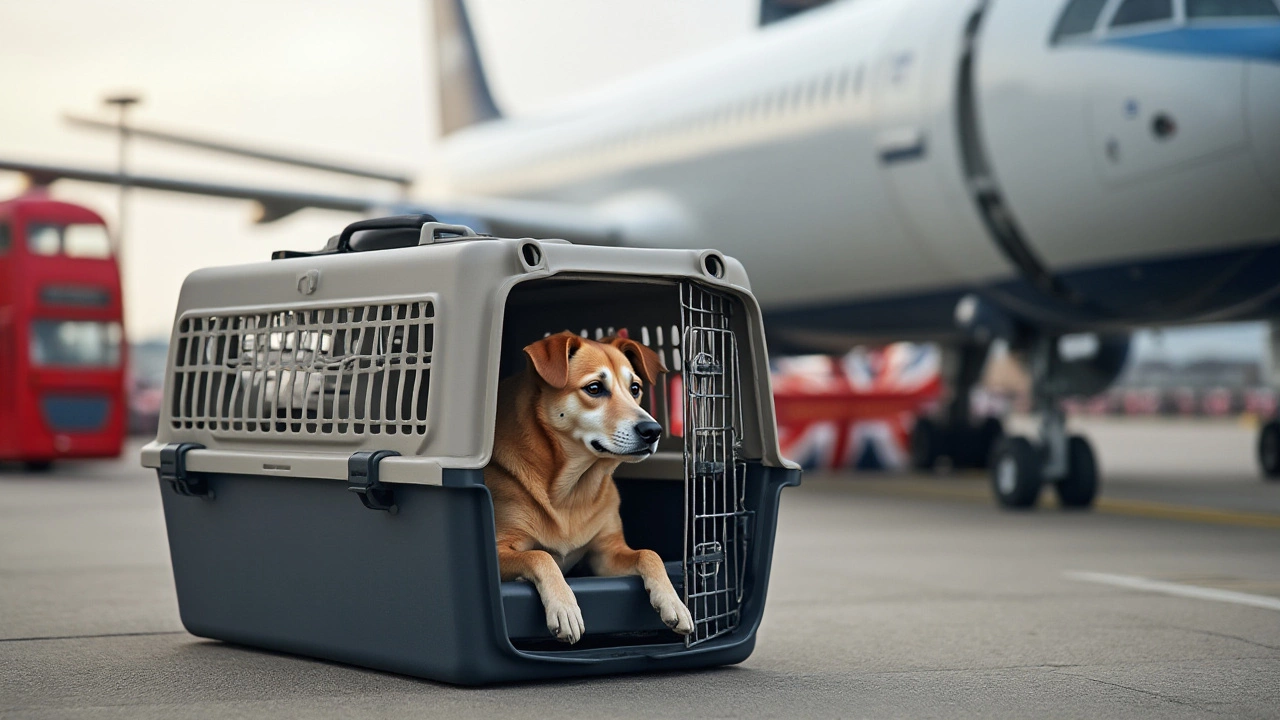
Tips for a Safe Journey
Embarking on a trip with your furry friend can be a delightful experience, but when air travel is involved, especially with your dog in the cargo hold, additional preparation is key. First and foremost, it's important to research airlines thoroughly, as they each have varied policies regarding pets. Consider airlines that have a good reputation for handling animals to minimize any potential risks or unnecessary stress. Knowing these policies will equip you with the ability to ask the right questions and make informed decisions when booking your flight.
Make sure to arrange a suitable travel crate for your dog. The crate should adhere to the guidelines specified by the airline, providing enough room for your pet to stand, turn around, and lie down comfortably. The crate represents your dog's space of solace, and therefore, it should be made as inviting as possible. Lining the crate with a soft blanket or towel that carries the familiar scent of home can provide comfort. In addition to comfort, ensure the crate is well ventilated for airflow and attach clear, updated identification details and any necessary health information.
Acclimating your dog to the crate is another essential step. Begin introducing them to it weeks before travel, encouraging short stints within the safe confines of their crate each day. This process reduces anxiety when it's finally time to take to the skies. Feeding your dog in the crate and making it a place of calm and routine is a useful strategy. Consider using pheromone sprays designed for dogs, which may help in controlling anxiety by creating a calming space within the crate.
On the day of travel, refrain from feeding your dog for several hours before the trip. Hydration, on the other hand, is crucial. Offer enough water to keep your pet hydrated without causing discomfort. Some pet owners swear by freezing water in the bowl within the crate, allowing it to thaw slowly and preventing spills. One expert notes,
"Travel can be disconcerting for animals, but creating an experience that is as predictable and familiar as possible can reduce stress significantly."
Don't forget to label the crate with signs like "Live Animal" to alert anyone handling the crate of the precious cargo inside. Speaking with the airline staff upon check-in to gently remind them of your dog in cargo can ensure they take special care when loading and unloading.
Finally, consider the weather conditions. Temperature extremes can be harmful, so plan flights around cooler evening hours during hot weather or midday during cold spells. Remember all these strategies are to minimize the stress on your dog and transform what might otherwise be a traumatic experience into something far more manageable and safe.
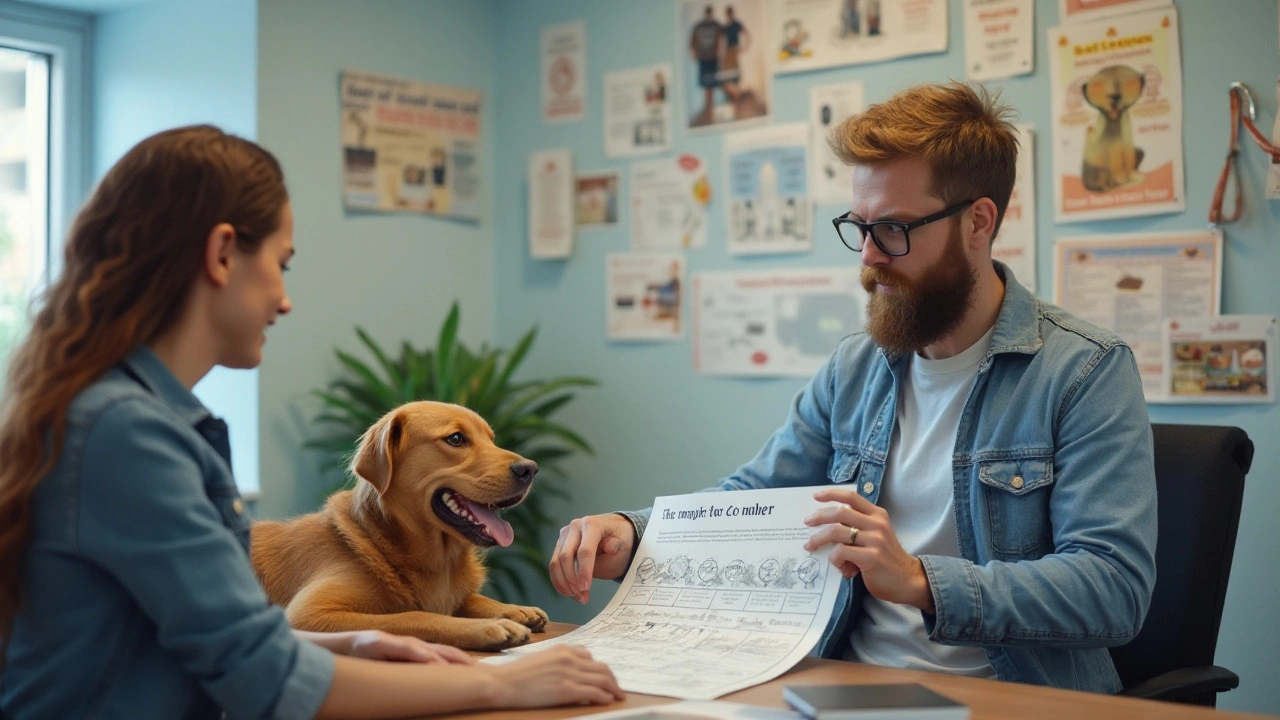
Airline Protocols for Pet Safety
Flying with pets requires a robust set of measures from airlines to ensure a safe and comfortable journey for every animal that travels in the cargo hold. Many airlines have specific pet travel policies designed to minimize stress and mitigate any potential risks associated with flying. A key component of these policies is temperature control. The cargo hold, contrary to popular belief, is pressurized and maintains a temperature similar to the passenger cabin. This is crucial because dogs are sensitive to extreme temperatures, and proper regulation helps keep their environment stable during the flight. Alongside temperature control, noise reduction measures are often in place. The cargo area is insulated to dampen the engine and external noises, which can be particularly distressing to pets not accustomed to such sounds.
Equally important are the protocols regarding the handling of dogs in cargo. Animals are usually the first onboard and the last off, limiting their time spent in transit on the tarmac where they might confront loud noises or fluctuating weather. Airlines train their staff specifically for pet handling, ensuring that loading and unloading procedures prioritize animal welfare. Many also require an acclimation certificate, which assures that the pet can endure the conditions during the flight. Specialized departments within some airlines are dedicated solely to overseeing pet transportation logistics, providing real-time updates to owners and addressing any in-flight concerns that arise.
"The well-being of our pet passengers is paramount, and we continuously enhance our protocols to maintain the highest standards of care," says an industry spokesperson from a leading airline.
Furthermore, some airlines now offer non-stop flights specifically catered to pets, to reduce the stress of layovers which can extend travel time significantly. This service is particularly beneficial for owners worried about their pets experiencing extended durations in an unfamiliar setting. Before flying, it's pivotal for pet owners to understand these protocols. Doing so not only provides peace of mind but also ensures proactive steps can be taken to prepare their pet adequately, based on the airline's specific requirements. Engaging with these protocols means thoroughly understanding the flying with pets aspect and being informed about the particular measures each airline has adopted for their specific cargo operations.

